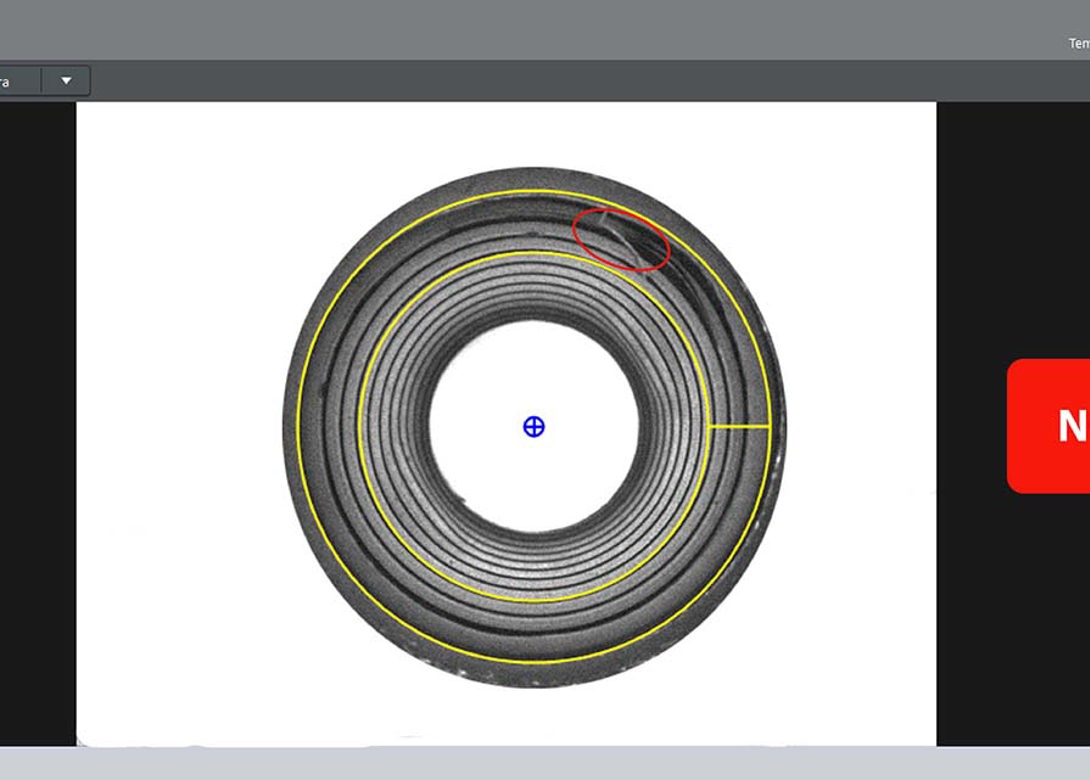

Like any sizeable or complex manufacturing project attaining zero defects is technically not possible – but still desirable. That’s why Dimac is using Artificial Intelligence to learn from defects and improve quality control, as well as adding the technology to its latest generation inspection and sorting machines.
Dimensional characteristics and material structure can be 100% controlled with state of the art inspection and sorting machine technology, but there are still defects of aspects that often require a final visual inspection, which only the human eye can guarantee by manual sorting.
Dimac has therefore implemented new Artificial Intelligence (AI) algorithms to process the images taken from surface digital cameras and to support the operator in the defect teach-in process. Defective parts are positioned below the surface cameras, the system then acquires the images and the operator highlights the defect in the image on the touchscreen using the available tools.
Defects such as cracks, stains, deformations, hints, dents and lack of material, which might not affect the part dimensions, are highlighted by the operator and taught-in in the system. After, the preliminary fast teach in process the system will be capable to recognise similar defects in the batch and the machine will be able to sort the parts. The AI algorithms require the availability of a gallery of NOK samples, in order to create a library of images of visual defects, which becomes the reference for the training of the system.
The benefits of Artificial Intelligence are not limited to inspection. The algorithms can interact with a company’s ERP system to exchange a large amount of data regarding the sorting cycle of every batch of fasteners – measured characteristics, attribute defects and tracking statistics about the defect distribution in the batch.
AI features are included in the last generation Dimac MCVx vision inspection software optimised for the brand new MCV6 high-speed inspection and sorting machine, based on a glass rotary table. The MCV6 represents another important step ahead for Dimac along the path to zero defects as it is an AI native machine, running with a fanless controller based on a processor of the 8th Intel generation 2660 Mhz DDR4 with GigE ports for high-resolution digital cameras and ultimate USB ports for external devices.

Having spent a decade in the fastener industry experiencing every facet – from steel mills, fastener manufacturers, wholesalers, distributors, as well as machinery builders and plating + coating companies, Claire has developed an in-depth knowledge of all things fasteners.
Alongside visiting numerous companies, exhibitions and conferences around the world, Claire has also interviewed high profile figures – focusing on key topics impacting the sector and making sure readers stay up to date with the latest developments within the industry.
Don't have an account? Sign Up
Signing up to Fastener + Fixing Magazine enables you to manage your account details.